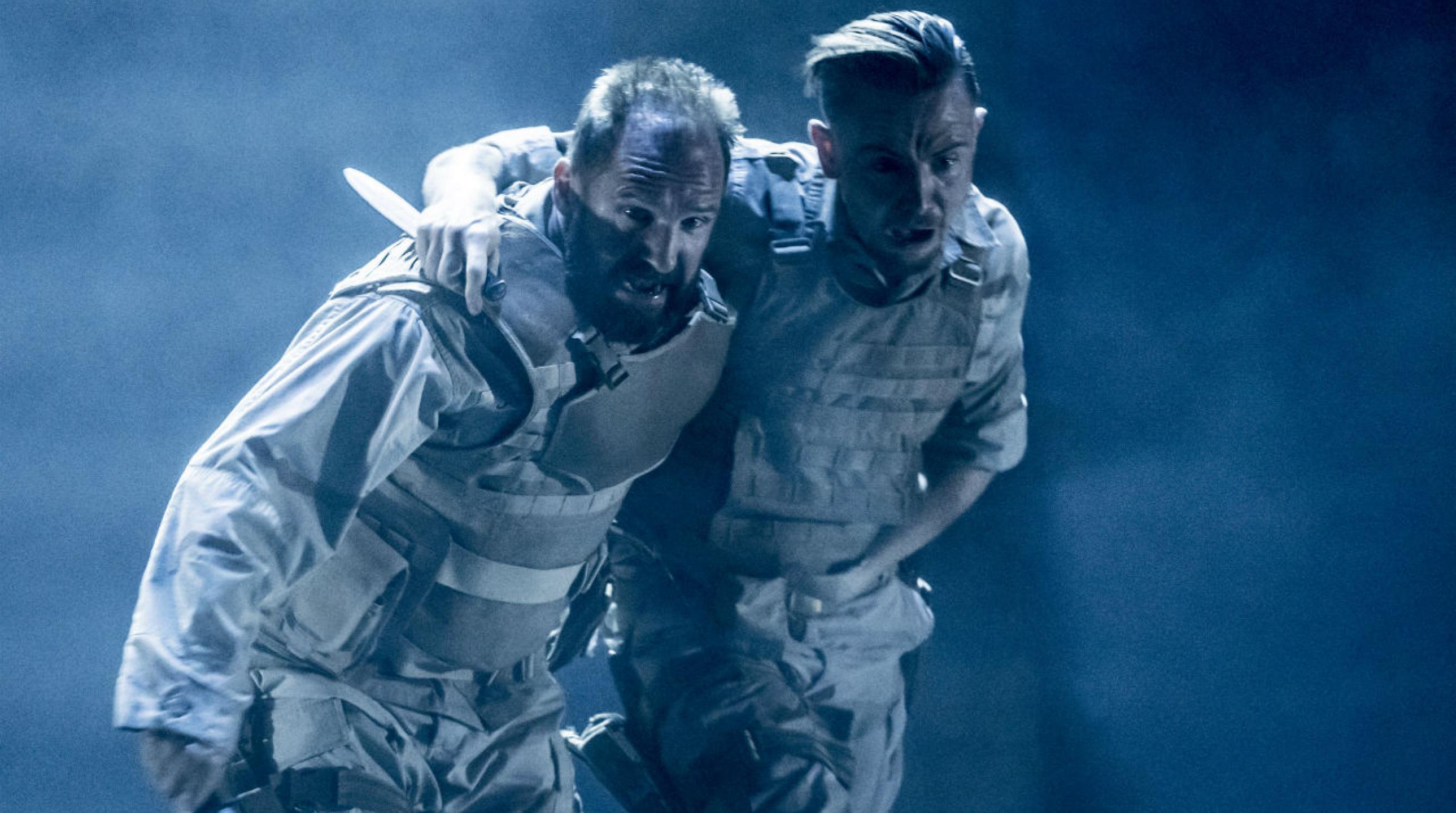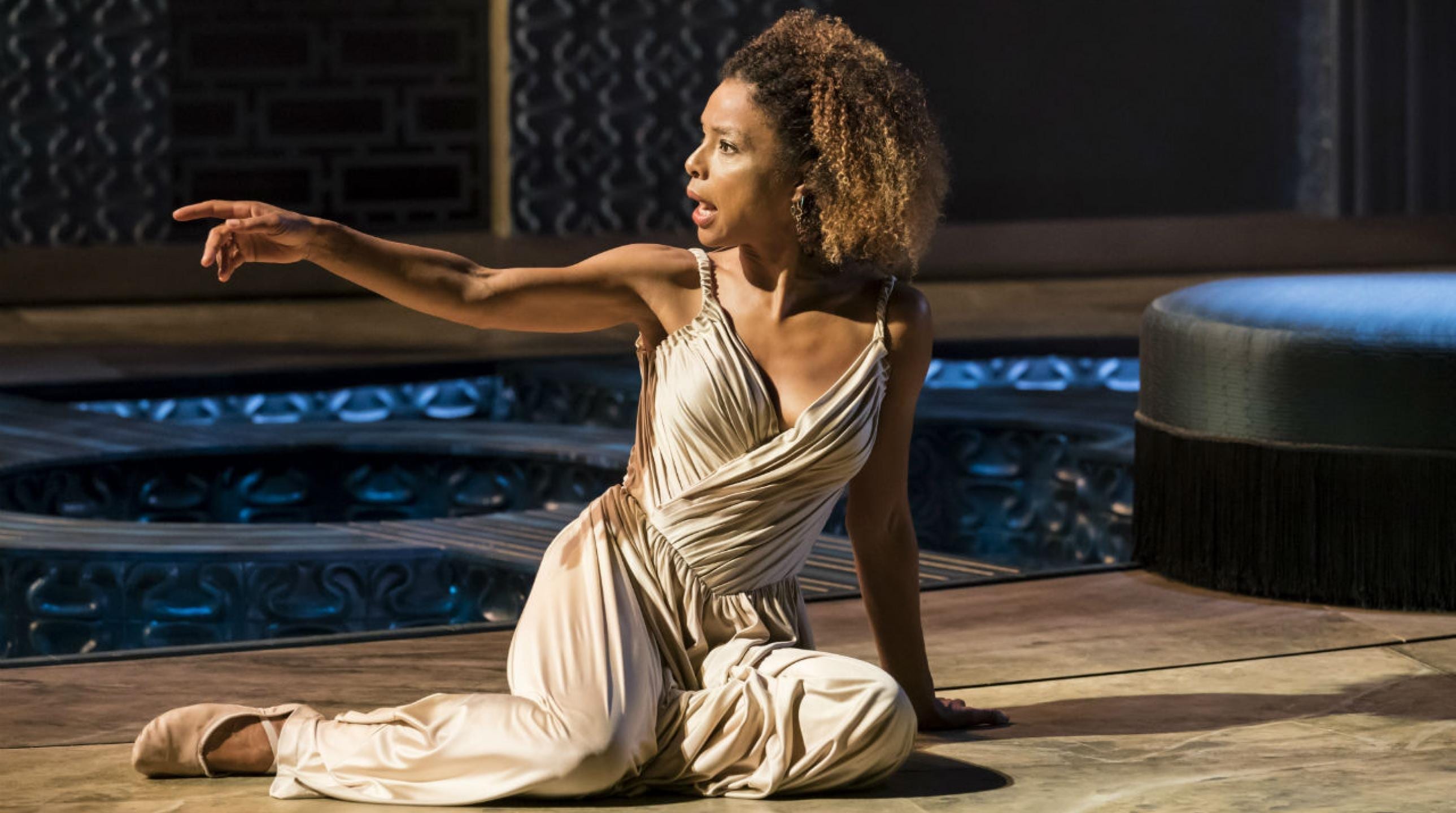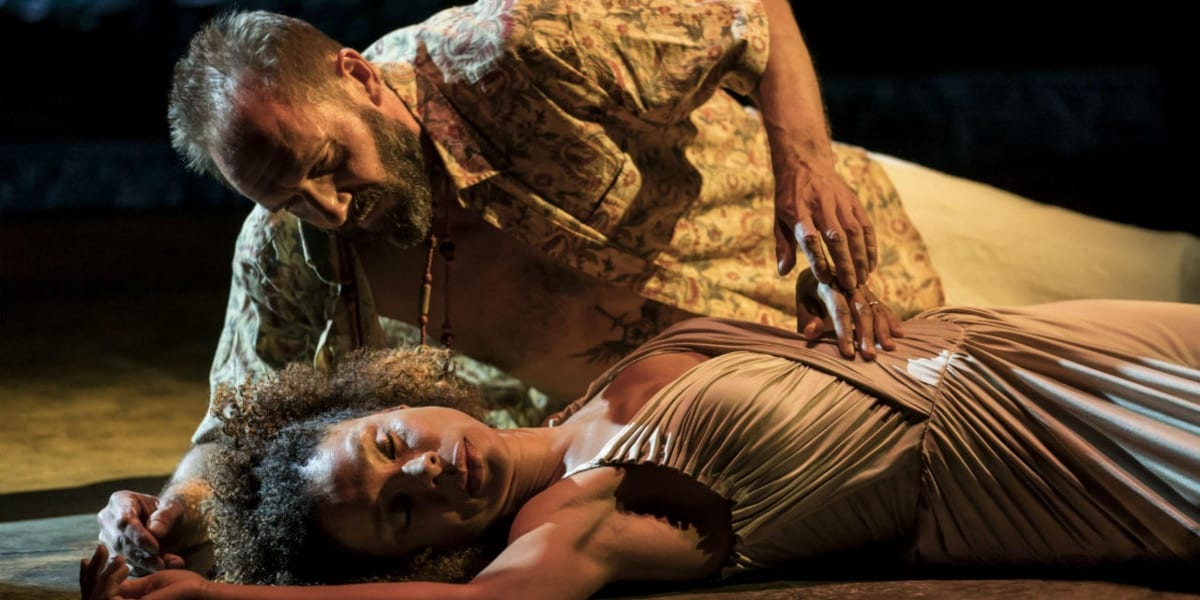Simon Godwin’s Antony and Cleopatra is an intricate masterpiece that makes good use of heavy-hitting actors while also boasting a marvellous set designed by Hildegard Bechtler. At a runtime of over 3 hours it certainly is a mammoth production, but one which offers up powerful scenes about the intense and fatal romance between Antony and Cleopatra to maintain your interest.
Sophie Okonedo puts in a standout performance as the petulant Egyptian queen who oscillates between chiding and adoring Antony. She is forever flanked by her devoted servants Iras (Georgia Sanders) and Charmian (Gloria Obianyo) who help calm her moods when she is most distraught. As Cleopatra fans the flames of her own passion, she collapses on both objects and people like an irate fiend, which can work humorously, such as when she forces the floundering Eros (Fisayo Akinade) into a shallow pool for bringing her the unwanted message of Antony’s remarriage. Okonedo’s Cleopatra is simultaneously terrifying and seductive as Antony’s muse: her attractive qualities are best extoled in the famous speech Enobarbus (Tim McMullan) gives, but she turns out to be a corrupting influence on Antony in how she distracts him from state duties; Cleopatra is Antony’s poisoned chalice.
Ralph Fiennes meshes well with Okonedo’s vitality. He has to juggle the temperamental politics of Rome with his relationship, but this act is something that ultimately cannot be sustained, falling apart in a tragic fireball with their dramatic suicides. So many lives are pinned to their romance; its dangerous intoxicating effects cause the ruin of Antony’s military fleet when he abandons them for Cleopatra. Fiennes is excellent as Antony, portraying him as a love-drunk yet embittered leader.
The stylisation choice of Godwin’s production really works well with the material of the play. Antony and Cleopatra now takes place in a war-torn Middle Eastern setting. The play starts in an exotic pleasure dome full of laughing girls and indolent bare-chested men, but this gives way to more imperious and menacing settings like a military submarine, cabinet rooms complete with a Pentagon-style surveillance and radar displays, as well as bullet-ridden plazas, eventually returning to the now-ruined pleasure dome. The set makes good use of the National Theatre’s rotating stage for seamless transitions and the pools full of water for an atmospheric effect; the projection mapping onto moveable battlefield arches is a nice touch to give the illusion of their destruction.

After Antony and Cleopatra burn the candle at both ends they die in explosive spasms. Cleopatra’s plan to fake her suicide and win back the affections of Antony fails spectacularly when Antony kills himself in anguish. There is time for a brief heart-wrenching reconciliation between the pair, but with Antony’s demise and the threat of Octavius Caesar parading her in Rome as a spoil of war, she resolves to join her lover. The once cheeky and flirtatious Cleopatra is gone, now replaced with a sombre one, yet she is no less powerful with her commanding voice, as she turns a live snake in her hand and lets it bite her, succumbing to its venom; this defiant act marks the end of one of Shakespeare’s most psychologically complex women.

